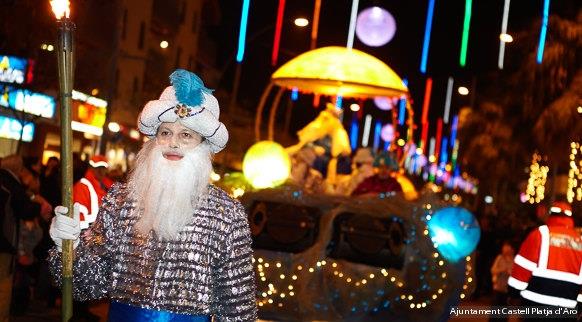
On the evening of 5th January all eyes are on Their Majesties the Kings of the East, Melchior, Caspar and Balthasar, who visit each town with their retinue bearing gifts for all the family. This is the popular Parade of the Three Kings, one of our most deep-rooted customs.
As darkness falls, children start to fill the streets armed with lamps to light the way for the Three Kings of the East. They blow whistles to welcome them and sing a popular ditty that goes, "Long live the three Eastern Kings; for one and all they do bring things!"
This parade of Christian origin represents the Three Kings' journey to Bethlehem, guided by a bright star, bearing the gifts of gold, frankincense and myrrh for the new-born baby Jesus. The Three Kings and the royal pages parade through the main streets of cities of towns on their floats, leaving a thick trail of sweets behind them.
On the days leading up to the big event, the children write their letters to the Three Kings with a list of the gifts they desire. During the night of 5th January, the Kings, mounted on their camels and with the help of their pages (and a generous helping of magic, of course) deliver gifts to every home. Before going to bed, children leave some food and drink out for the Kings and their camels to keep up their energy. The next day they wake up to discover their eagerly awaited gifts... as long as they've been good throughout the year. Sometimes, the Kings leave coal (made out of sugar nowadays) to warn children that they need to improve their behaviour.
The festive lunch on 6th January is always rounded off with the typical tortell de Reis (Kings' ring cake), filled with marzipan and topped with candied fruit. It also contains two hidden surprises: if you find the king figurine in your portion you get to wear the crown, but if you're unfortunate enough to find the dried bean you have to pay for the cake!